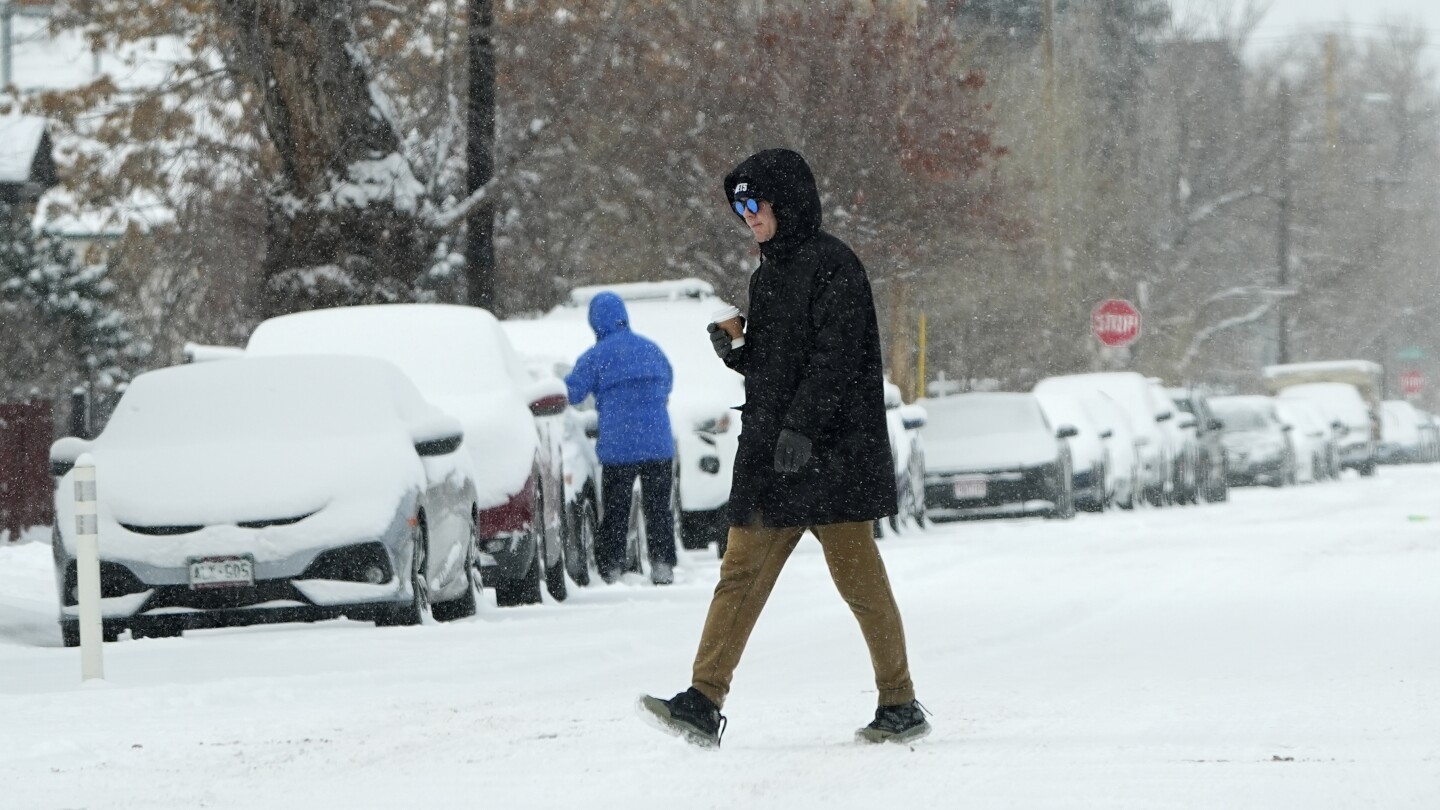Frigid Front Approaches: Understanding the Impacts of Winter Storms in the U.S.
As winter descends upon the United States, millions are bracing for a significant drop in temperatures. Meteorologists are sounding the alarm for an incoming wave of winter storms, which promise to disrupt daily life and create hazardous conditions across various regions. With frigid air sweeping through the country, it’s essential to understand what to expect and how to prepare for these winter challenges.
What Causes Winter Storms?
Winter storms are complex weather phenomena that can include a mix of snow, sleet, freezing rain, and bitterly cold temperatures. These storms occur when moist air from the Gulf of Mexico collides with cold air from Canada, creating the perfect conditions for precipitation. Some key factors that contribute to the formation and intensity of winter storms include:
- Temperature Gradients: The difference in temperature between warm and cold air masses can trigger storm development.
- Moisture Availability: Regions with high humidity are more susceptible to heavy snowfall.
- Topography: Mountains can influence the movement of air masses, leading to localized snowfall events.
Understanding these dynamics is crucial, especially for those living in areas prone to severe winter weather. As the frigid front approaches, awareness of these factors can help individuals stay informed and prepared.
What to Expect as the Frigid Front Approaches
The onset of winter storms typically brings a range of weather conditions. Here’s what you can expect as the frigid front approaches your area:
- Temperature Drops: Expect a sharp decline in temperatures, often plummeting below freezing.
- Snow Accumulation: Depending on the storm’s severity, snow accumulation can vary from a light dusting to several inches, or even feet in some regions.
- Ice Hazards: Freezing rain can create hazardous icy conditions on roads and sidewalks, increasing the risk of accidents.
- Wind Chill Factors: The combination of cold air and wind can create dangerously low wind chill values, posing risks of frostbite and hypothermia.
It’s important to stay informed through local weather updates and forecasts, especially when a winter storm warning is issued.
Preparing for Winter Storms
Preparation is key to mitigating the impacts of winter storms. Here are some essential tips to help you and your family stay safe:
- Emergency Kit: Assemble an emergency kit that includes essentials such as water, non-perishable food, medications, flashlights, batteries, and a first aid kit.
- Winterize Your Home: Ensure your heating system is functioning efficiently. Insulate pipes to prevent freezing and check that windows and doors are properly sealed.
- Vehicle Preparedness: Keep your vehicle winter-ready by checking the battery, tires, and antifreeze levels. Have an emergency kit in your car that includes blankets, food, and a shovel.
- Stay Informed: Monitor weather reports and alerts. Sign up for local alerts to receive timely information about severe weather in your area.
By taking these proactive measures, you can ensure your safety and comfort during the winter storms.
Impacts on Daily Life
As winter storms hit the U.S., the impacts can be far-reaching, affecting various aspects of daily life. Here are some of the notable disruptions you might encounter:
- Travel Disruptions: Airports may delay or cancel flights, and road conditions can become treacherous, leading to accidents and traffic jams.
- School Closures: School districts may cancel classes or delay openings to ensure student safety.
- Power Outages: Heavy snow and ice accumulation on power lines can lead to outages, leaving homes without heat or electricity.
- Emergency Services: First responders may face challenges in reaching those in need due to hazardous conditions.
These disruptions highlight the importance of community preparedness and resilience. Staying connected with neighbors and local resources can be vital during these challenging times.
Staying Safe During a Winter Storm
When winter storms arrive, safety should be your top priority. Here are some recommendations to help you stay safe:
- Avoid Travel: If possible, stay off the roads during severe weather. If you must travel, use extreme caution and allow extra time to reach your destination.
- Dress Appropriately: Wear layers to stay warm, and ensure you have proper winter gear like gloves, hats, and boots.
- Stay Indoors: During the peak of a storm, it’s best to stay indoors and keep warm. Use safely stored heating methods, and avoid using generators indoors.
- Check on Neighbors: Look out for elderly or vulnerable neighbors who may need assistance during extreme weather.
By following these safety tips, you can help protect yourself and others during the storm.
Conclusion: Embracing the Winter Season
As the frigid front approaches and winter storms hit the U.S., it’s crucial to stay informed, prepared, and safe. While these weather events can pose significant challenges, they also offer an opportunity to embrace the beauty of winter. From cozy nights by the fire to the scenic beauty of freshly fallen snow, there’s much to appreciate about this time of year.
By taking the necessary precautions and staying connected with your community, you can navigate the winter storms with resilience and optimism. Remember, every storm eventually passes, and brighter days are always ahead.
See more Your Daily Weather



